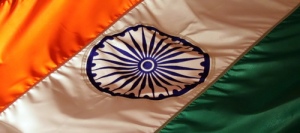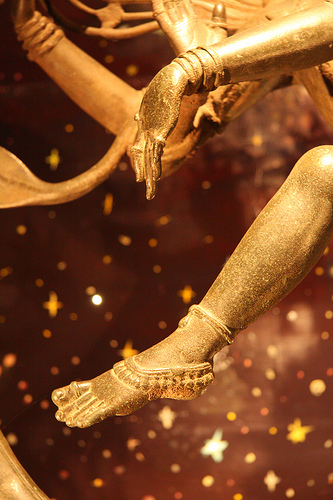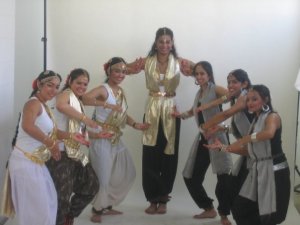There are way too many Bharatanatyam dancers who think their completion of an arangetram and years of training places them at a pedestal above all other dancers in their field. There’s confidence, and then there’s cocky, and there’s a fine Kancheepuram silk thread between the two.
As for me, I usually recognize when there’s room for improvement, so when my mother last week corrected my abhinaya (expression) in a piece I’m preparing for a November performance, I’ll admit I was somewhat diffident about performing the piece at all. This was because I wondered whether there was even a possibility to capture such an emotion: the shyness exhibited by a young bride when her to-be husband touches her hand for the first time.
I made several attempts at this expression as my mother repeatedly told me that my expression was far too bold and needed to look more coy. It made me wonder, however, if girls growing up in America are even capable of expressing the emotion at all. Are we perhaps too open-minded and brazen that we cannot portray the timidity expressed by a young bride on the day of her wedding?
As journalist Nita J. Kukarni writes, Indians today, girls and boys, whether living in India or not, no longer maintain the pristine reputations that perhaps their parents or grandparents once did.
“Boys and girls from even traditional families are dating, but secrecy is the name of the game…If there are any guilt pangs for this elaborate deceit, they are suppressed by the overwhelming needs of these youngsters, needs which are no longer considered immoral.”
For a generation of Indians breaking the social norms of marriage, dating and relationships that once were, is virginity and shyness around the opposite sex an obsolete concept?
It reminded me of an article by Anuradha K. Ganpati I read once on Narthaki.com about teaching young Indian-American girls of the longing a woman may feel for a king or Lord during a padam (expressive narrative) or javali (romantic) piece.
Ganpati argues that feelings of longing, love and desire are pertinent to young teenage girls:
“Can the ratisringara themes in Bharatanatyam actually apply to contemporary Los Angeles? Does not longing, disappointment, anticipation of passionate union and various aspects of love apply to contemporary teenage life in America?”
But as the mother of one of the young Californian dancers notes, “My daughter, at 15, will not reconcile to the fact that this woman is pining for her man. She finds it too ‘cheesy’ because she has been raised in America. The culture is different here, girls are much more verbal and direct here.”
Thus it is the pining, the waiting game with which young girls today can no longer relate. Because they utilize a direct approach in their own love-lives, shyness in the company of the opposite sex is a concept that’s hard to grasp.
So as the November performance approaches quickly, I’ve decided to opt for a different dance piece right now — but that is not to say that I’m going to abandon the challenge of capturing that shy expression. Perhaps today’s modern women, through deliberate and repeated practice, can portray the expression which once came naturally to women of generations past.


